Input interpretation

1, 2-dichloropropane
Chemical names and formulas
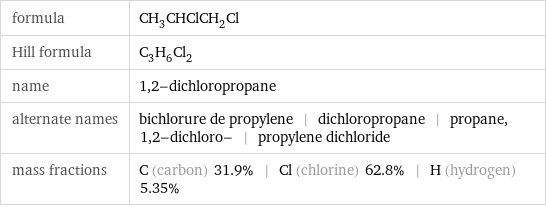
formula | CH_3CHClCH_2Cl Hill formula | C_3H_6Cl_2 name | 1, 2-dichloropropane alternate names | bichlorure de propylene | dichloropropane | propane, 1, 2-dichloro- | propylene dichloride mass fractions | C (carbon) 31.9% | Cl (chlorine) 62.8% | H (hydrogen) 5.35%
Lewis structure
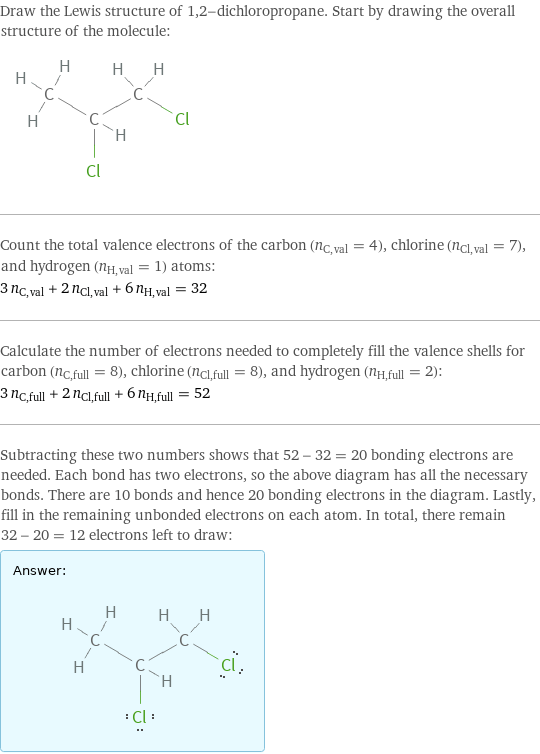
Draw the Lewis structure of 1, 2-dichloropropane. Start by drawing the overall structure of the molecule: Count the total valence electrons of the carbon (n_C, val = 4), chlorine (n_Cl, val = 7), and hydrogen (n_H, val = 1) atoms: 3 n_C, val + 2 n_Cl, val + 6 n_H, val = 32 Calculate the number of electrons needed to completely fill the valence shells for carbon (n_C, full = 8), chlorine (n_Cl, full = 8), and hydrogen (n_H, full = 2): 3 n_C, full + 2 n_Cl, full + 6 n_H, full = 52 Subtracting these two numbers shows that 52 - 32 = 20 bonding electrons are needed. Each bond has two electrons, so the above diagram has all the necessary bonds. There are 10 bonds and hence 20 bonding electrons in the diagram. Lastly, fill in the remaining unbonded electrons on each atom. In total, there remain 32 - 20 = 12 electrons left to draw: Answer: | |
3D structure
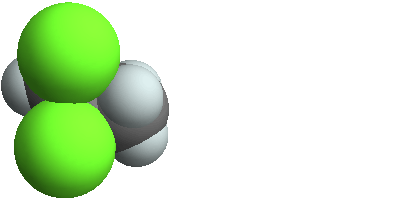
3D structure
Basic properties
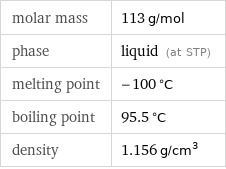
molar mass | 113 g/mol phase | liquid (at STP) melting point | -100 °C boiling point | 95.5 °C density | 1.156 g/cm^3
Units

Hydrophobicity and permeability properties

experimental LogP hydrophobicity | 1.98 predicted LogP hydrophobicity | 2.13 predicted LogS | -1.73
Basic drug properties

approval status | experimental | small molecule
Liquid properties (at STP)
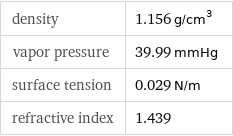
density | 1.156 g/cm^3 vapor pressure | 39.99 mmHg surface tension | 0.029 N/m refractive index | 1.439
Units

Thermodynamic properties
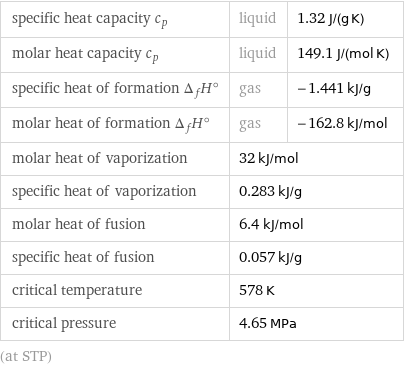
specific heat capacity c_p | liquid | 1.32 J/(g K) molar heat capacity c_p | liquid | 149.1 J/(mol K) specific heat of formation Δ_fH° | gas | -1.441 kJ/g molar heat of formation Δ_fH° | gas | -162.8 kJ/mol molar heat of vaporization | 32 kJ/mol | specific heat of vaporization | 0.283 kJ/g | molar heat of fusion | 6.4 kJ/mol | specific heat of fusion | 0.057 kJ/g | critical temperature | 578 K | critical pressure | 4.65 MPa | (at STP)
Chemical identifiers
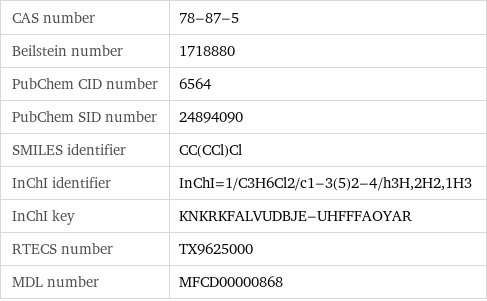
CAS number | 78-87-5 Beilstein number | 1718880 PubChem CID number | 6564 PubChem SID number | 24894090 SMILES identifier | CC(CCl)Cl InChI identifier | InChI=1/C3H6Cl2/c1-3(5)2-4/h3H, 2H2, 1H3 InChI key | KNKRKFALVUDBJE-UHFFFAOYAR RTECS number | TX9625000 MDL number | MFCD00000868
NFPA label

NFPA label

NFPA health rating | 2 NFPA fire rating | 3 NFPA reactivity rating | 0
Safety properties
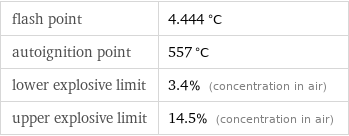
flash point | 4.444 °C autoignition point | 557 °C lower explosive limit | 3.4% (concentration in air) upper explosive limit | 14.5% (concentration in air)

DOT hazard class | 3 DOT numbers | 1279
Toxicity properties

RTECS classes | agricultural chemical and pesticide | tumorigen | mutagen | reproductive effector | primary irritant